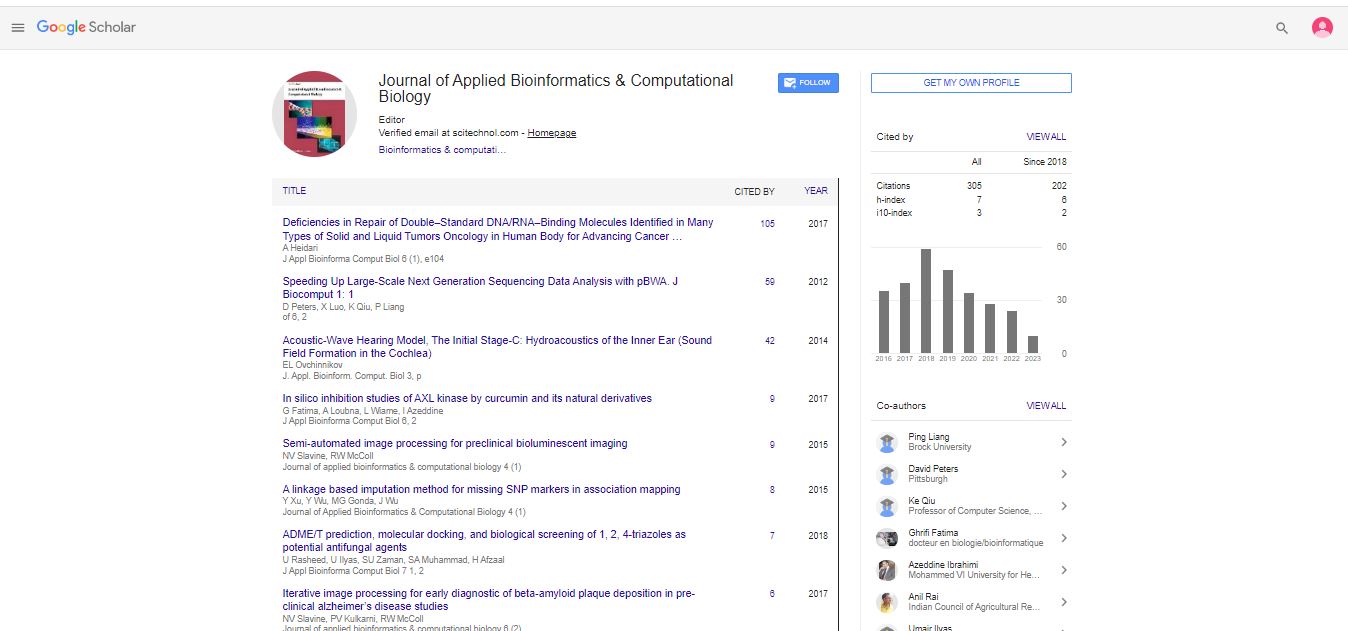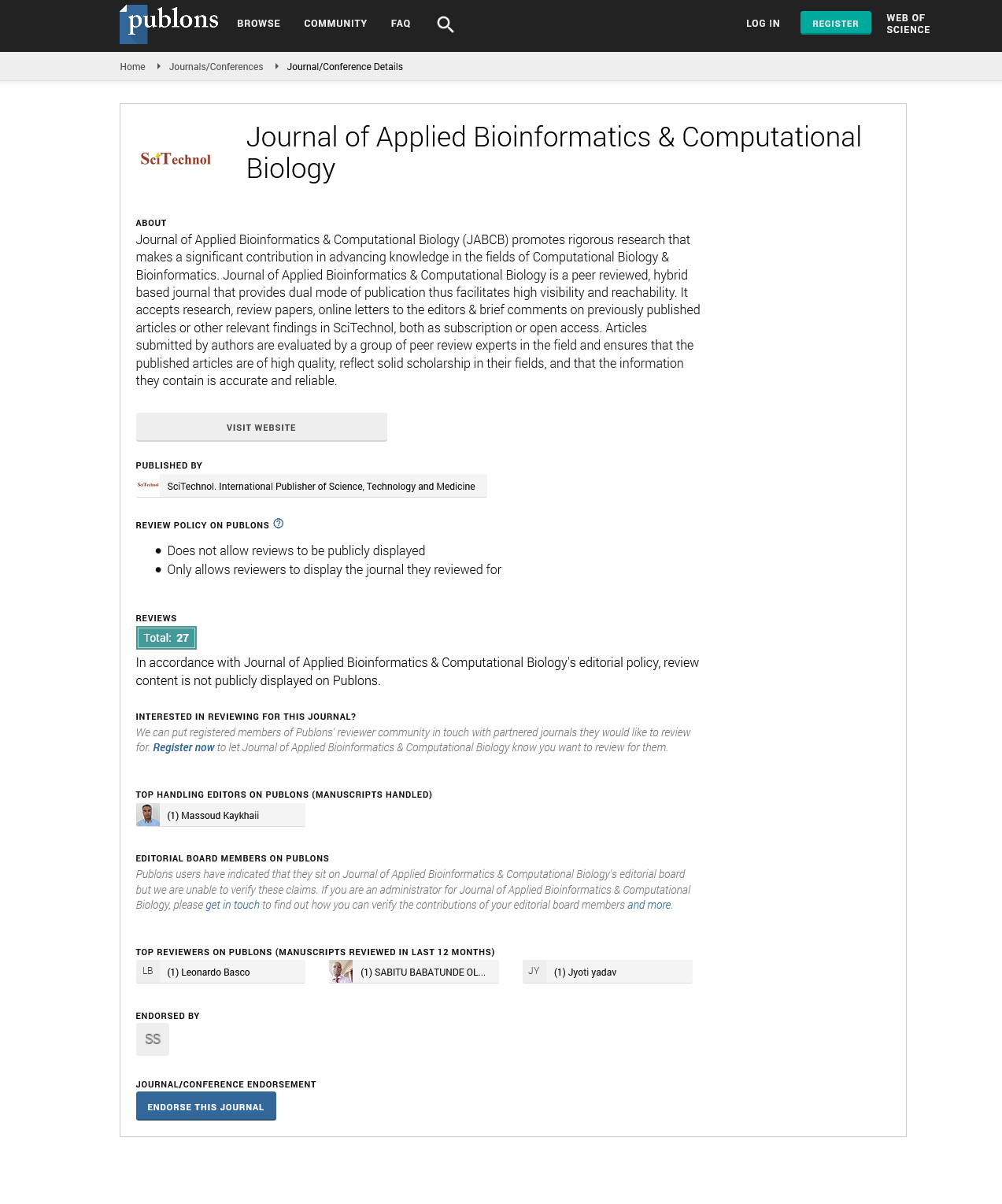Regulation of global brain states: Orienting oscillatory trajectories
Denis Larrivee
Loyola University Chicago, USA
: J Appl Bioinforma Comput Biol
Abstract
Autonomy, the hallmark of advanced living systems, depends on how the brain and extended nervous system are selfregulated to accommodate the multiplicity of tasks and temporal sequencing that comprises cognitive operation. Directed to the good of the whole organism, self-regulation reveals both the need for and existence of global brain mechanisms that modulate local neural events and oversee their spatiotemporal organization. Hence, there is an implicit coupling between global and local scales that characterize large-scale, systemic operation, requiring that oversight mechanisms be regionally distributed for local activation. Existing evidence indicates that mediating control depends on a distribution of oscillatory, electropotential activity, that is, brain dynamical elements that exhibit repetitive and cyclical profiling. There is a broad consensus that oscillations detectable in EEG patterns, for example, can be grouped in frequency bands denoting different brain states. Because of their significance for human health, this paper considers underlying processes that activate and disengage such oscillatory mechanisms, and that is, therefore, responsible for modulating these states. Controlling such oscillatory networks globally is thought to be achieved through modulation of their frequency patterning, which may, for example, include synchronization, desynchronization, or cross-frequency coupling. Synchronization entails oscillatory overlap, which is thought to bind together various feature elements in cognitive representations, like those of emotions and sensory events; desynchronization, by contrast, entails oscillatory disengagement. Accordingly, the capacity for selectively engaging and disengaging oscillator activity is key to directing different brain states, that is, to mediating the orientation of bifurcations to different dynamical elements. This paper will explore the roles of two processes likely to be critical to inducing regulatory directionality, neural pulsing and neural noise. The two will be considered in the special case of memory circuits, which will be used here as a general model for achieving global brain regulation.
Biography
Denis Larrivee is a Visiting Scholar at Loyola University Chicago and has held professorships at the Weill Cornell University Medical College in New York City and Purdue University, West Lafayette, Indiana. A former fellow at Yale University's Medical School and Department of Biology he received the Association for Research in Vision and Opthalmology's first place award for studies on photoreceptor degenerative and developmental mechanisms. He is the current editor of a text entitled Brain-Computer Interfacing and Brain Dynamics with InTech Publishing and an editorial board member of the journals Annals of Neurology and Neurological Sciences (USA) and EC Neurology (UK). An International Neuroethics Society Expert he is the author of more than 50 papers and book chapters in such varied venues as the Journal of Cell Biology, Journal of Neuroscience, and Journal of Religion and Mental Health, and IEEE Explore.
E-mail: sallar1@aol.com
 Spanish
Spanish  Chinese
Chinese  Russian
Russian  German
German  French
French  Japanese
Japanese  Portuguese
Portuguese  Hindi
Hindi 
